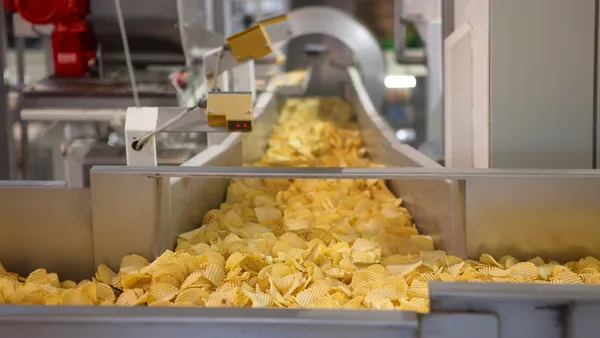As Gen Z comes of age — born between 1997 and 2012 — food and beverage producers are adapting items to their idiosyncratic and diverse tastes, upending the established norms of which food groups and flavor combinations belong together.
Chef Joe Labombarda, the SVP of the culinary division at Chartwells Higher Education Dining Services, said young people today care less about traditional cuisine distinctions. Labombarda helps craft the foodservice menus for a variety of schools, representing over 2 million U.S. college students.
One factor to the diversification of flavors, he said, is the wider availability of flavors from across the world that are authentic to consumers.
“You see more and more first generation students from different countries, and inauthentic international foods or flavor profiles don’t cut it anymore,” Labombarda said. “The audience is too big, they’re going to let you know if it’s not good on social media, and manufacturers have caught onto that.”
The chef said “chaos cuisine” and viral trends on TikTok are inspiring new meal combinations that were not previously embraced.
“For the chefs who thrive on creativity and experimentation, our audience right now is awesome,” Labombarda said. “It’s such an opportunity for people who thrive on making bold food experiences, like playing with Nashville hot chicken in a bao bun. Some of those flavor profiles marry so well.”

Spicing it up
A significant factor in the shift in taste is Gen Z’s embrace of spicy food. This trend is underscored by the rise of snacks like Frito-Lay’s Flamin’ Hot products, which became its own designated brand earlier this year. Over half of Gen Z consumers identified themselves as fans of hot sauce in a survey earlier this year.
Gen Z is the first generation to prefer Mexican cuisine to Italian food. Mexican food is projected to grow at a compound annual growth rate of 6.65% through 2026, increasing by $113.8 billion, according to Technavio.
Looking ahead to the future, Labombarda said there are still regions of the world, such as Southeast Asia, with flavors that have not yet reached mainstream menus and ingredient decks in the U.S.
“In countries like Vietnam, there’s so many chilis, salsas, jams and sauces with flavor profiles that are fantastic,” Labombarda said.
Food manufacturers are turning to Asian flavors that American consumers are not yet widely familiar with. Ingredients maker T. Hasegawa USA declared ube — a bright purple root grow in the Philippines, with a nutty sweet taste — as 2024’s flavor of the year.
Long-term trends toward health will also continue to dictate food preferences, according to the chef. The next age cohort Gen Alpha, born after 2012 up to today, he said, will continue to learn more about the benefits of food as they grow up.
“Young people are also a lot more conscious of what they’re putting in their bodies, so we’re seeing an uptick in the amount of proteins people are consuming, and the use of food as fuel for clarity or energy,” Labombarda said.














